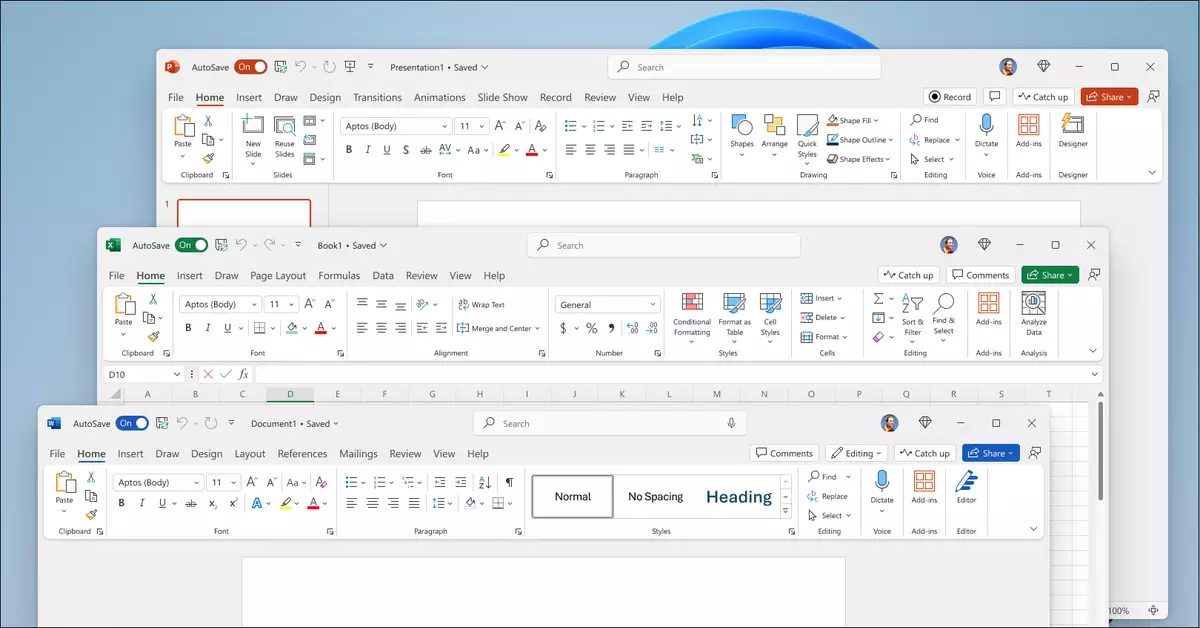In a significant move for users who prefer traditional software offerings, Microsoft has recently launched Microsoft Office 2024. This standalone suite caters specifically to individuals and small businesses that favor a one-time purchase over monthly subscriptions like Microsoft 365. Building upon the momentum of its predecessor from the 2021 release, Office 2024 integrates numerous enhancements that echo the features previously made available to Microsoft 365 subscribers.
The new edition brings updated versions of essential applications such as Word, Excel, PowerPoint, OneNote, and Outlook, available on both macOS and Windows platforms. Aimed at providing a refreshed and user-friendly experience, Microsoft has adopted its Fluent Design principles to create a default theme that visually aligns with the aesthetics of Windows 11. Beyond mere appearances, crucial improvements also focus on accessibility, ensuring that users are equipped to manage and identify potential barriers in their documents seamlessly.
Excel 2024 showcases some of the most prominent enhancements across the suite. New functions have been added that delve into utilizing text and arrays within worksheets—a move designed to enable users to execute more complex operations effortlessly. A particularly intriguing new feature is the IMAGE function, which allows for the integration of web-sourced images directly into spreadsheets. Furthermore, updates now enable charts to reference Dynamic Arrays, ensuring that data visualizations stay current by automatically adjusting in line with live data changes. Microsoft promises that overall performance in terms of speed and stability has received substantial boosts, which is paramount for data analysts and heavy users.
PowerPoint has not been left behind in this wave of enhancements. With the introduction of the Cameo feature, users can now enrich their presentations by embedding real-time video feeds from their cameras, providing an engaging, personal touch to slides. Another noteworthy addition is the recording studio capability, allowing users to record narration alongside animations and transitions, thus creating a more dynamic presentation experience. This includes support for closed captions in audio and video, a vital accessibility feature that aims to make presentations inclusive for all audiences.
Outlook 2024 has also seen significant refinements, particularly in search functionality. Users can expect more relevant results when looking for emails, attachments, contacts, and calendar events, streamlining daily productivity tasks. An interesting new feature adds flexibility in meeting scheduling by introducing options to automatically shorten meeting durations. For Mac users, there is added customization with swipe gestures, enhancing navigation within the application. These enhancements aim to bolster user efficiency, which is critical in today’s fast-paced work environment.
Microsoft Word continues to evolve, integrating functionalities that cater to user needs meticulously. With the ability to easily insert images from Android devices and support for OpenDocument Format (ODF) 1.4, Word 2024 enhances collaborative efforts. Additionally, users can react to comments—a feature that can make engaging with feedback significantly more intuitive. Most importantly, an auto-recovery feature has been implemented, which opens previously active documents after unexpected closures or crashes, greatly reducing the risk of data loss and user frustration.
OneNote 2024 introduces a revamped inking and drawing experience, enhancing creative note-taking capabilities. This is complemented by robust accessibility features introduced across all applications, helping users recognize and resolve potential barriers within documents. Microsoft’s continued emphasis on accessibility reflects a growing understanding of the diverse needs of its user base.
Microsoft Office 2024 represents a thoughtful blend of innovation and accessibility improvements that respond to the evolving requirements of users. By providing a standalone option, Microsoft caters to a demographic that prefers the simplicity of one-time purchases while delivering features designed to enhance productivity across various tasks. As the suite rolls out to users with the promise of improved performance and user-centric tools, it seems poised to solidify its place as an essential productivity solution for many. It is indeed an exciting time for Microsoft Office as it continues to adapt and meet the demands of its diverse user base.


Leave a Reply